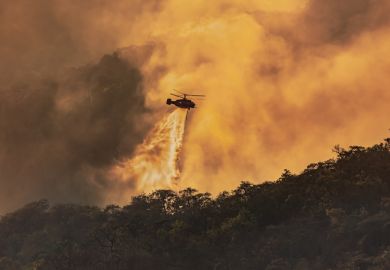The distribution of water in the Middle East has always been uneven but, until recent times, many societies have been able to live without famine in the major river basins of the region. However, over the last few decades rapidly increasing population numbers have disrupted the balance between people and available water resources. These two books focus on these changes in two rivers within the region. The first, by Lowi, concentrates on the Jordan, which while only a small river by world standards, has tremendous religious significance to Christian nations. Today it also contains the area of conflict and dispute between the Palestinians and Israelis. In contrast, the Nile, dealt with in the book by Said, is one of the world's great rivers in terms of its area, length and discharge. Here water disputes are only just beginning, but it would seem inevitable that they will become more important in the future as the upstream nations begin to use the waters of the Nile.
Lowi's book is a study of politics and international relations which uses the Jordan basin as a stage on which various ideas and issues can be illustrated. The book is well written and easy to read. It comprises 204 pages of text, followed by appendices and detailed notes. These notes are extremely useful. In contrast, the index is rather weak and would benefit from expansion.
The book starts with a short introduction and then is divided into three parts of approximately equal size. The first part, termed "Riparian dilemmas", sets the scene for the Jordan basin and also examines similar riparian disputes on the Euphrates, Indus and Nile. Part Two deals with the nature of the conflict over the waters of the Jordan in the period from the time of the establishment of the state of Israel to the mid-1960s. In the final part changes in the Jordan basin since the June War of 1967 are covered with emphasis placed on specific issues such as dam building on the Yarmouk River and West Bank groundwater.
As a text the book will be of prime interest to political scientists and the international relations community. Throughout, the waters of the River Jordan are very much a secondary issue, with by far the greatest emphasis being placed on the political frameworks within which the conflicts over water resources are being fought out. The major theme of the book is the political/security aspect of water problems and the potential for co-operation on international rivers.
The actual physical environment of the Jordan basin is given little consideration. It is described as a static entity, little emphasis being paid to the fact that hydrological conditions are dynamic and that in arid and semi-arid environments changes from year to year are much more important than "mean" or "average" conditions. This is unfortunate as it implies that the water resource base is a fixed entity which can be simply divided among the claimants. Too little emphasis is given to drought conditions and the necessary strategies to deal with them. The book misses an opportunity to integrate aspects of political theory with modern views on the environment.
Much of the book is framed within the debate in international relations theory between two schools of thought: political realism and liberal institutionalism. In essence this debate becomes the main thrust of the book and at times the water issues of the Jordan River merely seem to provide illustrative examples. For those interested in water resource disputes in the Middle East this book will prove useful and rewarding in so far as it provides a different perspective from many of the existing works on the region. However, it must be remembered that although water is the focus of the book the main theme is really political.
Said's book on the Nile has a much broader focus as the title suggests and is essentially interdisciplinary in approach. This, however, tends to be a major weakness as the diversity of topics covered reduces the overall unity of the book. It is also apparent that the author is more skilled in handling the geological aspects than the historical and resource management aspects.
The book is divided into four parts. Part one treats the origin and evolution of the River Nile. It employs a geological perspective for the most part and is concerned with the sedimentary evolution of the basin. It is often technical in nature and is much more suited to a geological audience than to a general reader, or even those with knowledge of hydrology and water resource management.
Part two consists of a series of chapters dealing with aspects of the hydrology of the Nile. Only one chapter, though, deals with the actual amounts of water present within the river during the 20th century, the others providing an assessment of changes in Nile flow which have occurred over the last 10,000 years. Regrettably these sections can be rather long and difficult to follow.
In the third section, on the utilisation of the waters of the Nile, the historical approach once again prevails. Unfortunately it is difficult from the text to obtain a clear perspective on the changes which have taken place over time owing to the disjointed nature of the writing and the lack of balance between different periods. Indeed, the material on perennial irrigation and all the changes which have occurred in the 20th century merits only 43 pages. The final section covers the various treaties dealing with the waters of the Nile and the ways in which the riparian countries may co-operate in future. It is essentially descriptive in approach and provides few new insights into Nile water issues.
Overall this is a disappointing book because it lacks coherence. It will provide useful reference material for workers in the region but I doubt that it will become a classic work.
Peter Beaumont is professor of geography, University of Wales, Lampeter.
Water and Power: The Politics of a Scarce Resource in The Jordan River
Author - Miriam R. Lowi
ISBN - 0 521 43164 6
Publisher - Cambridge University Press
Price - £35.00
Pages - 291pp
Register to continue
Why register?
- Registration is free and only takes a moment
- Once registered, you can read 3 articles a month
- Sign up for our newsletter
Subscribe
Or subscribe for unlimited access to:
- Unlimited access to news, views, insights & reviews
- Digital editions
- Digital access to THE’s university and college rankings analysis
Already registered or a current subscriber? Login



